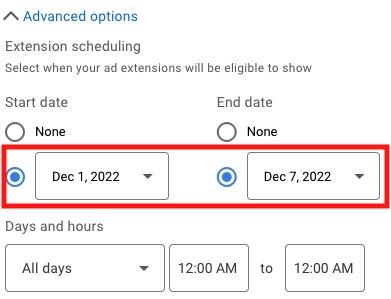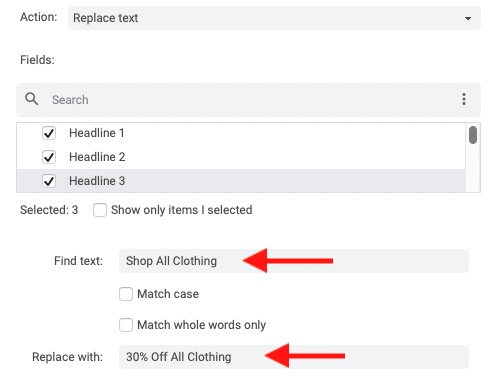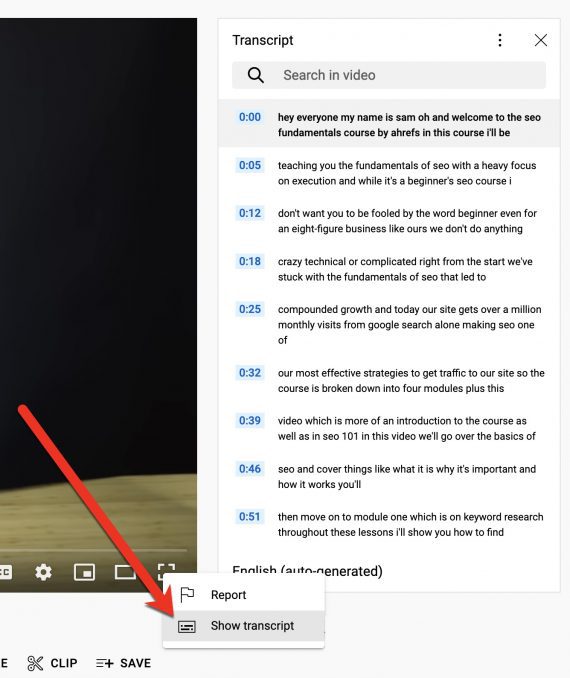Promotion extensions can address multiple holiday events, including:
Set Up Enhanced Conversions
We’re halfway into 2022. Now is the time to prepare Google Ads accounts for the upcoming holidays. In this post, I’ll list five steps to generate better results while streamlining management during the busy period.
Replace text in bulk with Google Ads Editor. This example replaces each headline containing “Shop All Clothing” with “30% Off All Clothing.”


Ensure RSAs in All Ad Groups
At its May 2022 “Marketing Live” event, Google announced Performance Max updates, including experimentation tools, insights and explanations, and recommendations. All should provide more insight into campaign results and trends, although overall disclosure remains limited.
Set promotion extensions to a monetary or percent discount. This example shows 30% off on Black Friday.
Schedule Promotions
To schedule each extension, click “Advanced options” and choose the dates it will run.


Advertisers typically see an increase in conversions when implementing Enhanced Conversions. This example from the author shows a rise of 3.36%.
- Black Friday,
- Cyber Monday,
- Hanukkah,
- Boxing Day,
- Christmas.
Character counts apply to all extensions — up to 25 (with spaces) in sitelink headlines and callouts and 20 for promotions.
As with new ads, pin the promo in headlines 1 or 2 so it always appears. Once the promotion is complete, you can revert to the previous ad copy.
The other option is to change the text in existing ads. You can do this in bulk with the “Replace text” function in Google Ads Editor. Check off the headlines and descriptions that contain the text you want to update. The example below finds every instance of “Shop All Clothing” and replaces it with “30% Off All Clothing.”
A safe and effective way to test Performance Max is to focus on a single segment. For example, focus initially on chairs if you sell home goods. Target the “chairs” category of your product feed and use chair-related images and text.


Performance Max campaigns have existed for a couple of years. Performance Max uses audiences and automation to show various ad formats across Google’s inventory, such as YouTube, Shopping, and Discover. Advertisers can connect product feeds to Performance Max campaigns (similar to Shopping ads). I’ve seen good results from Performance Max, but the lack of transparency makes optimizing difficult.
You can also highlight the sale days, such as “Starts 12/1” or “Valid 12/1 – 12/31.”
Certain ad extensions you can create now and schedule to run during the holidays. The first is a promotion extension. Set it to a monetary or percent discount (i.e., off or 20% off).


Compile Assets
As of June 30, advertisers can no longer create expanded text ads. Responsive Search Ads are the default ad type. Existing expanded text ads will stay in accounts but without the ability to edit.
Test Performance Max Campaigns
You should also add your promotions to RSAs, though it’s more convoluted than setting up the extensions. The quickest way is to create separate RSAs and schedule them as you would with the extensions. Pin the promotion in headline 1 or 2 to guarantee it shows. However, the problem with this method is new ads may not see as many impressions as existing ones because they don’t have any data compiled. Moreover, even pausing legacy ads does not increase impressions of new versions.
Sitelinks and callouts are the other extensions that can contain promotional text.
Implement RSAs now in all ad groups. In addition to testing multiple headlines and descriptions simultaneously, RSAs appear in more ad auctions. “Missing RSA Checker” is a script that will identify all ad groups with active RSAs.






